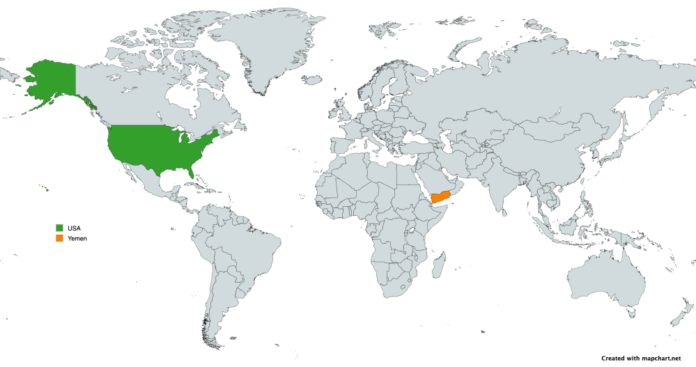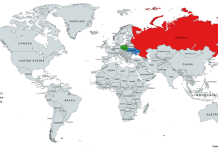
A new round of United States airstrikes hit Houthi-controlled areas in Yemen on Saturday, further escalating tensions in the region. According to Houthi sources, at least 13 strikes targeted an airport and a port in the coastal city of Hodeida, along with additional strikes reported in the capital, Sanaa. These latest operations come less than 48 hours after a devastating US strike on the Ras Isa oil terminal, also in Hodeida province, that reportedly killed 74 and injured 171 others.
The US Central Command confirmed ongoing operations but did not release casualty figures for the most recent strikes. It reiterated that its actions were intended to degrade the Houthis’ capacity to finance and execute attacks in the Red Sea and on allied nations, including Israel. Central Command said the strikes were “not intended to harm the people of Yemen” and emphasized the focus on fuel smuggling and infrastructure used by the Houthis to fund their operations.
Thursday’s attack on Ras Isa marked the deadliest single strike in the current US campaign, which began in earnest last month under renewed direction from President Donald Trump. The administration has cited repeated Houthi attacks on international shipping lanes in the Red Sea and missile and drone launches toward Israel as justification for the campaign. The Ras Isa terminal, according to the Pentagon, was being used to generate illicit revenue for the Iranian-backed group.
The Houthi-led government in northwest Yemen, however, maintains that Ras Isa is a civilian facility and has called the strike a war crime. Houthi officials said many of those killed were workers at the site, and that paramedics were also among the dead due to secondary strikes while responding to the initial blasts. Images broadcast by Houthi-run Al-Masirah TV showed scenes of burned-out fuel tankers and wounded civilians in hospitals.
On Friday, thousands of Houthi supporters took to the streets in Sanaa to protest the US strikes, many waving flags and carrying firearms. The group’s leader, Abdul Malik al-Houthi, delivered a televised speech in which he claimed the movement’s capacity to launch attacks remained intact. He said the Houthis had conducted nearly 80 operations since mid-March, including attacks on the US aircraft carrier USS Harry S. Truman and multiple launches toward Israel.
The conflict in Yemen, now over a decade old, has displaced millions and left half the population in need of aid. The war began when the Houthis seized control of much of the country’s northwest, including Sanaa, prompting intervention by a Saudi-led coalition backed by the United States. The Houthi group has increasingly positioned itself as part of a regional axis opposing Israel and the West, with recent attacks justified as solidarity with Palestinians amid the war in Gaza.
Since November 2023, Houthi forces have targeted numerous commercial vessels in the Red Sea and Gulf of Aden, claiming to strike those with ties to the US, UK, or Israel. Despite Western naval patrols and prior US-led strikes, the group has continued its campaign. The Biden administration had earlier removed the Houthis from the US list of Foreign Terrorist Organizations, but President Trump reversed that decision in January after returning to office.
As the air campaign continues, humanitarian concerns are mounting. UN Secretary-General António Guterres expressed deep concern over the rising civilian toll and urged all parties to respect international law and protect non-combatants. With at least 200 people reported dead in the current campaign since March 16, observers warn the situation in Yemen may grow even more volatile.
USA = Green
Yemen = Orange
Image is licensed under the Creative Commons Attribution-Share Alike 4.0 International license and was created using MapChart (https://mapchart.net).







